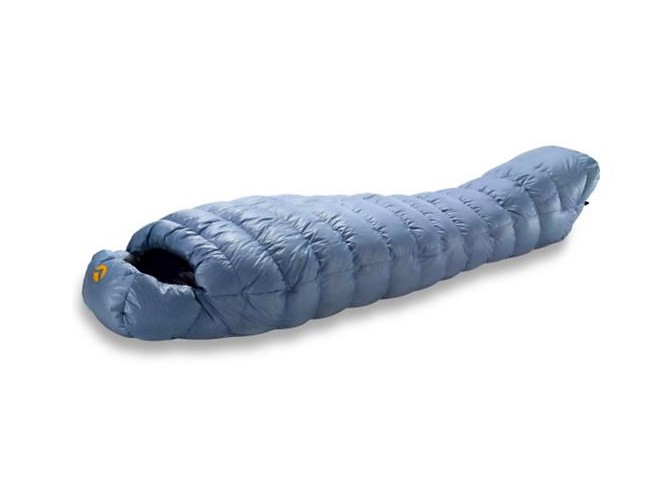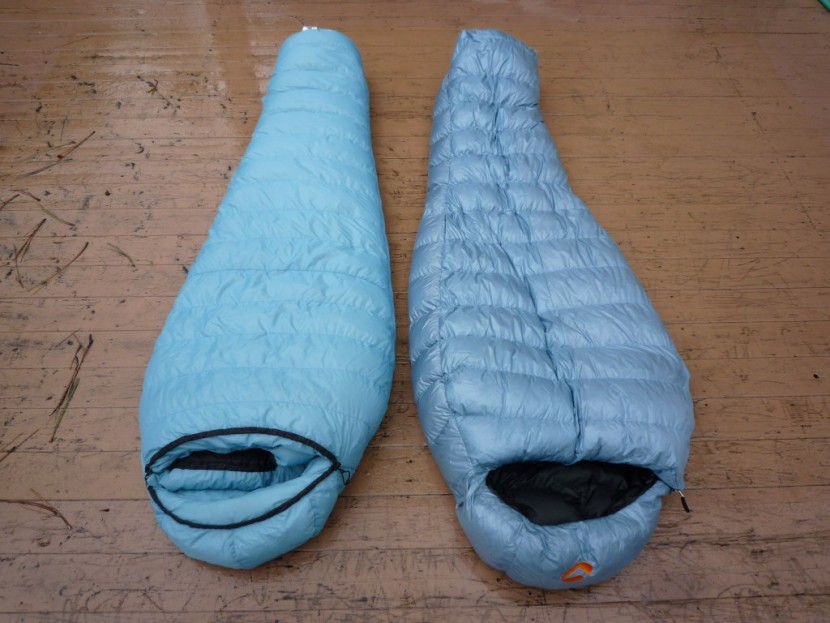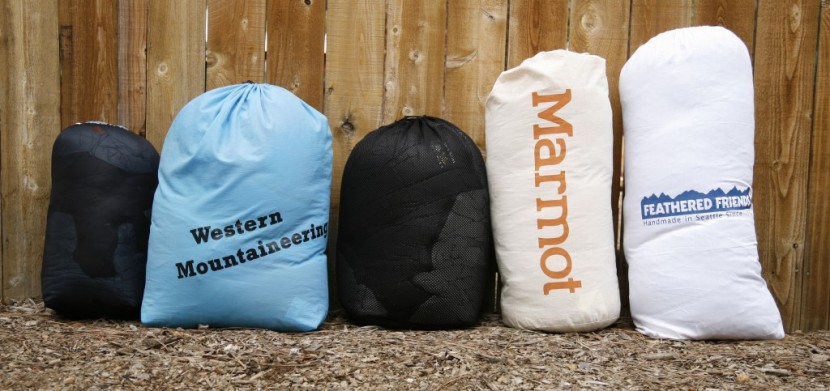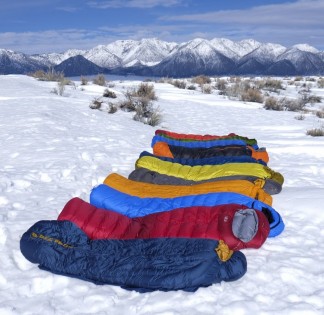Valandre Shocking Blue Review
Our Verdict
Our Analysis and Test Results
Likes
The Valandre Shocking Blue is a very warm, well-featured, and spacious cold weather expedition sleeping bag. Its 850-fill down comes from the French Fat Grey Goose, a bird capable of migrating at 33,000 feet in -60°F temperatures for days on end. Its shell material, the Japanese Asashi KASEI Impact 66 WR Polyamide Ripstop, is cut into 91 custom cut fabric panels and baffles.
The Shocking Blue's most notable features are its neck baffle and foot box. The former is extremely effective at keeping cold air out. One enters the baffle through three Velcro strips along the bag's main zipper. The opposite side of the neck baffle opens and closes with a short zipper and a draw cord in the middle pulls the baffle tight again your neck (see photos). The neck baffle can either be cinched super tight around your neck or opened up quite comfortably. The foot box is also impressive. It's both wide and tall, and provides tons of space for your feet, electronics, socks, gloves, or whatever you need to keep warm during the night.
The Shocking Blue differs from other bags in its cut. Most moderate winter sleeping bags have a narrow (38 to 40-inch) foot girth, a wider (58-inch) hip girth, and slightly wider (62-inch) shoulder girth. The Shocking Blue is narrow from the feet through mid-thigh (42 inches), then balloons out from the hip to shoulder (57 to 63 inches) before tampering in slightly at the neck and head. This cut provides tons of room in the upper body, which can make it thermally inefficient for skinny people without much clothing on. Having more space allows you to wear other layers inside the bag, which is recommended. The cut makes the Shocking Blue an excellent choice for cold weather (zero degrees or below) mountaineering and alpine climbing where one would wear down pants and a jacket inside the bag (you need space so that these layers can loft properly).
Dislikes
The Shocking Blue's neck baffle, or Marie Antoinette Collar, can be complicated and adds weight to the bag. Three Velcro tabs, a zipper, and a drawcord create a complicated and claustrophobic closure around your neck. Although this is slighter warmer than a normal neck baffle, it's also time consuming and difficult to enter and exit, and heavier than a simpler closure.
The Shocking Blue's hood adjustment system is another potential drawback. Most sleeping bags hoods have one drawcord that's fixed to one side of the bag. The Shocking Blue uses a continuous cord that's not attached to either side. Instead it has an adjustment at both ends end and a snap-like connector that attaches the two parts. The adjustments can be used connected or not, but our testers preferred to use them when connected. Unfortunately, a small spring-loaded button make it difficult to disconnect the two parts. This whole system is harder to use and heavier than the traditional cinching mechanisms found on almost all other sleeping bags.
Due to its wide cut, fancy neck baffle, and large footbox, the Shocking Blue is five ounces heavier than the non-expedition bags tested here and- depending on what you're wearing- may be less warm for its weight. For example, the bag contains the same amount of down (~28 ounces) as the Mountain Hardwear Phantom, which weighs six ounces less.
Best Application
Extended cold weather (0 degrees F or below) expeditions where you'll be wearing a down jacket and pants inside the bag.
Value
The Shocking Blue costs $709. This is $160 more than the next most expensive bag (Feathered Friends Snowbunting) we've tested.







